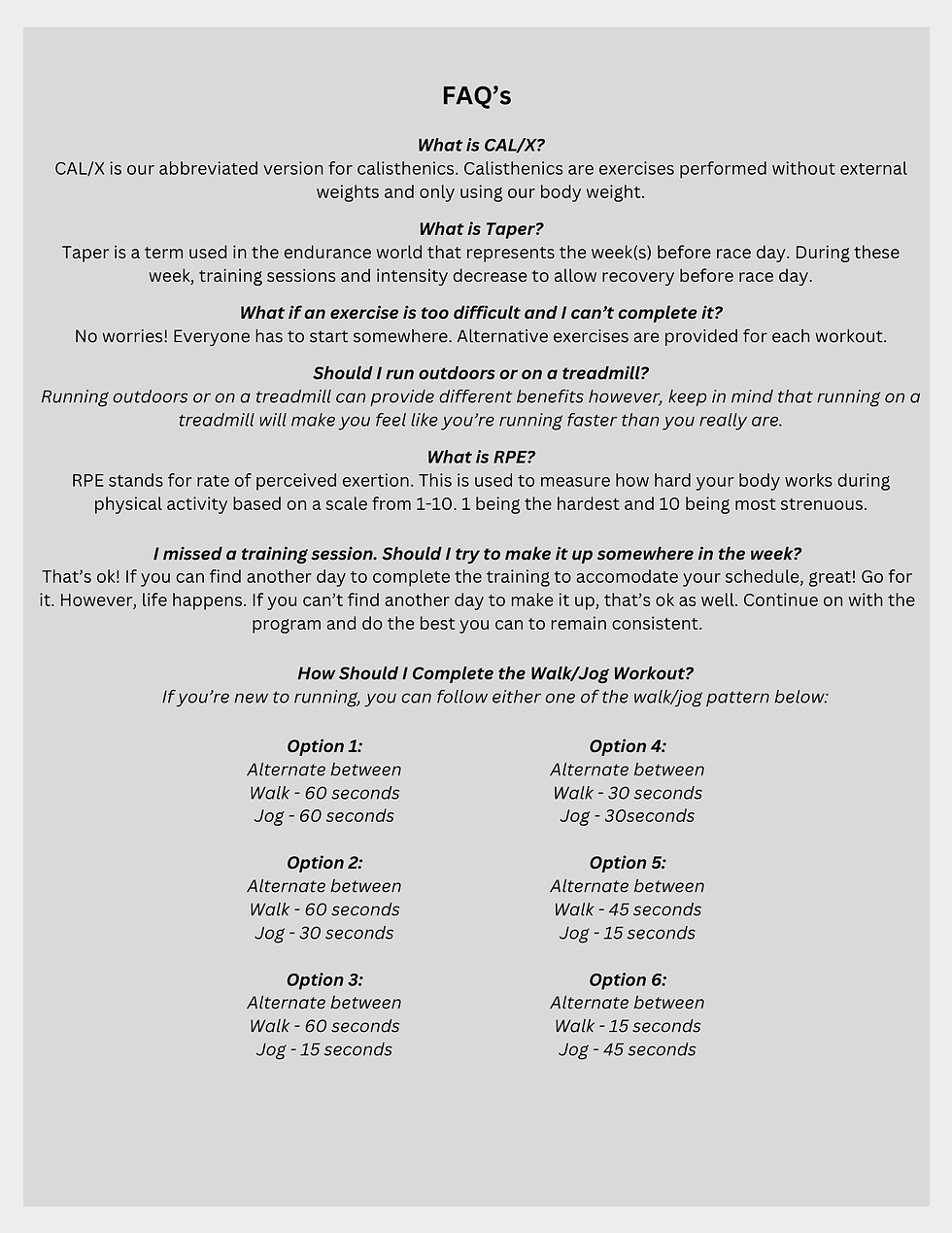12-Week 5k Run Training Program
- Initial Mile
- Jan 5
- 3 min read
Updated: May 29

This 12-Week 5k Run training program was created to help you improve your overall one-mile run time, increase running speed and complete a 5k run.
Have you always wanted to complete a 5k race event or have you ever wanted to set a faster personal record for a 5k run but need some guidance? This 12-Week 5k Run training program was designed with every warrior level in mind. This 12-Week program starts with an easy introduction of walking and jogging that gradually transforms into a complete training program. You should have some basic experience with intentional walking or jogging before starting this program.
What's Your Current Fitness Level?
Because this 12-week training program includes five to six days of training per week, understanding your current fitness level and training experience can help determine how many days you should be training a week and how much intensity should be included. Below are only recommendations based on the amount of overall months of training. Keep in mind that everyone, including yourself, is different. You may have only one month of training in running but one year of calisthenics training or vice versa. Choose the appropriate training sessions based on your experience and fitness level.
Beginner: 1-3 months of training experience
Complete the shortest amount of time or each distance for each run until you are comfortable extending each session.
Start the training program with walking only or follow one of the walk/jog routines shared in the program for the first 2 weeks.
Utilize light to medium weight for the first month of weight training.
Fridays are considered an additional rest day.
Intermediate: 3-6 months of training experience
Complete mid-distance amount of running per run session.
Complete Cal/X routine only 1x per week.
Utilize medium to heavy weight for the first month of weight training.
Fridays are considered an additional rest day.
Advance: 6 months of training experience
Complete workout as programmed
How do I Know When I Should Add on More Time or Mileage to my Runs?
When you are able to complete the amount of time or mileage of the programmed runs with minimal effort or zero pain, you can increase the distance of the run, time of the run or intensity of the run.
Rated Perceived Exertion (RPE) Cardiovascular Training Scale:
Understanding the RPE cardiovascular training scale and implementing this practice into your sessions can remove the intensity "guess" work, help prevent burnout and help utilize your training time more efficiently. RPE scale range of 2-3 is easy and you can maintain a conversation. RPE scale range of 3-4 is considered moderate and exercise because a bit more difficult. RPE scale range above 5 is when exercise becomes more intense and breathing can become more difficult.
Keep In Mind:
Building speed and and endurance can take more then 12-weeks. Depending on your current fitness level status, this training program can either help you get started toward that goal or can help you achieve the goal within the 12 weeks. As with all training programs, everything is based on commitment and discipline!
Training Program Breakdown:
Weeks 1-2: Build Consistency
Weeks 3-6: Build Run Foundation & Muscular Strength
Weeks 7-10: Build Endurance and Speed
Weeks 11-12: Taper and Maintenance
Supporting Links:





Disclaimer: All information presented and written within this article are intended for informational purposes only. You should not rely on this information as a substitute for, nor does it replace, professional medical advice, diagnosis, or treatment. If you should choose to follow or participate in any workout, program or practice, you do so voluntarily and do not hold Initial Mile and it's founder responsible for any cause of injury or death. If you have any concerns or questions about your health, you should always consult with a physician or other health-care professional.



Comments